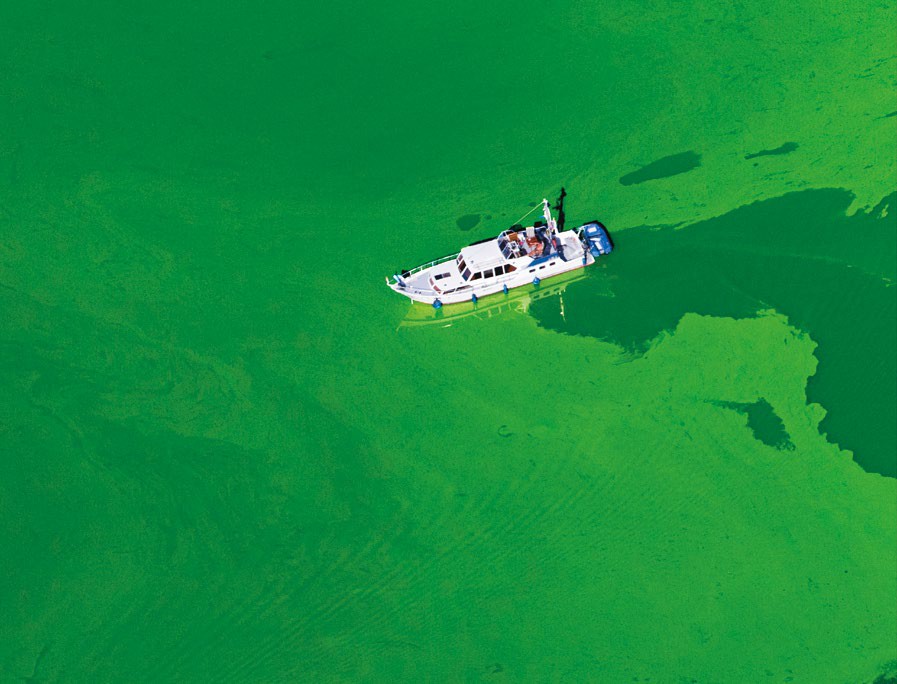Blue-green algae can be dangerous when they produce chemicals that are harmful to humans and animals. Exposure is usually through untreated drinking water or recreational activities in lakes that have toxin-producing algae. They can produce skin irritants that lead to a rash after contact with contaminated water. The other two groups of harmful chemicals are classified as liver and neurotoxins because of how they affect the human body, and have led to incidents of human and animal poisoning worldwide. Even some fatalities have occurred after ingestion of very high toxin concentrations. It’s also thought that long-term exposure can lead to chronic illnesses such as liver cancer. Blue-green algae can accumulate to high cell numbers – so-called harmful algae ‘blooms’ that often look like green scum floating on the surfaces of lakes. These blooms usually form in stagnant water in summer when temperatures are highest and when there are a lot of nutrients in the water. However, lakes and reservoirs used for drinking water and recreational activities are closely monitored to ensure there’s no risk of poisoning.
